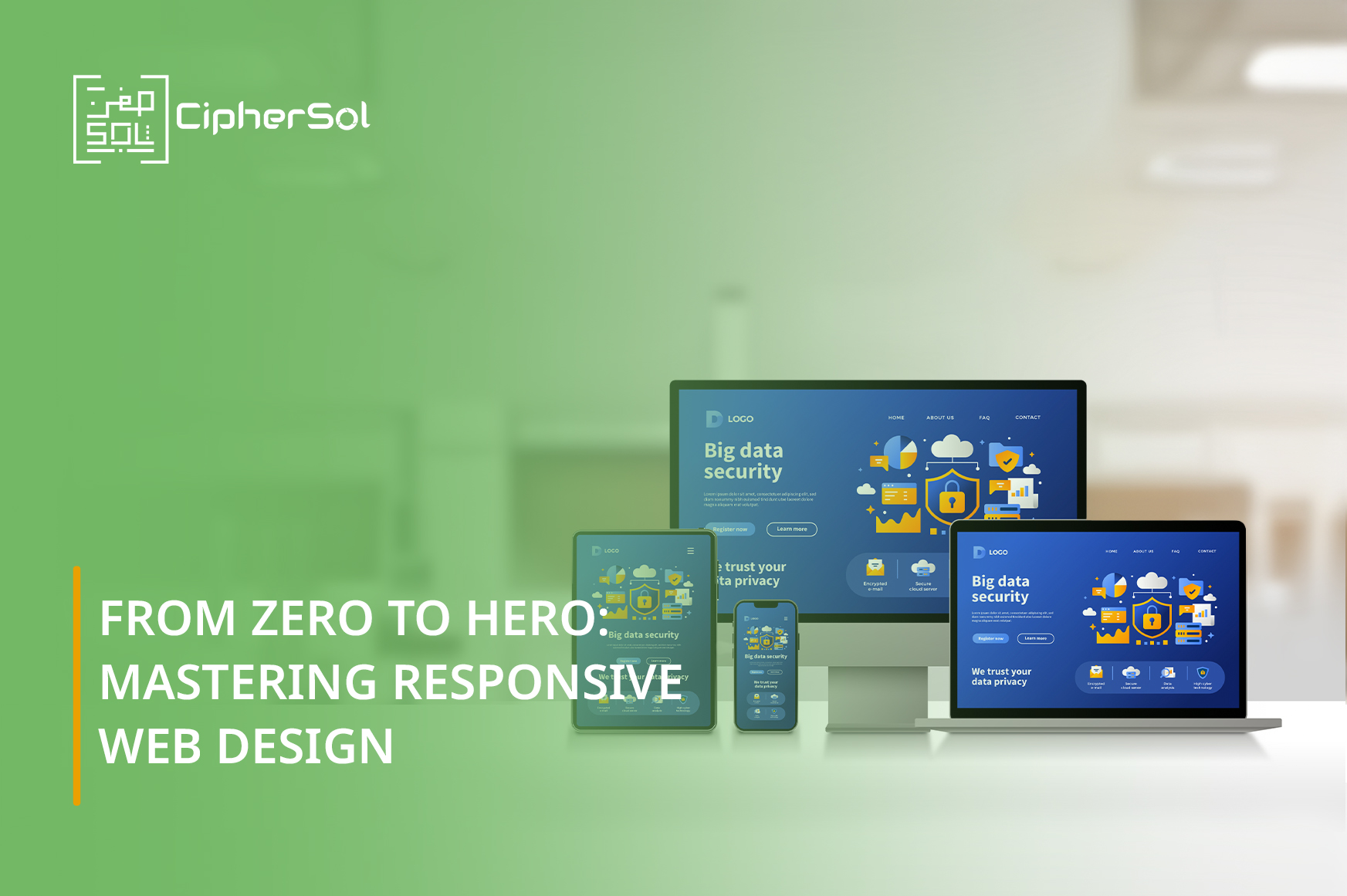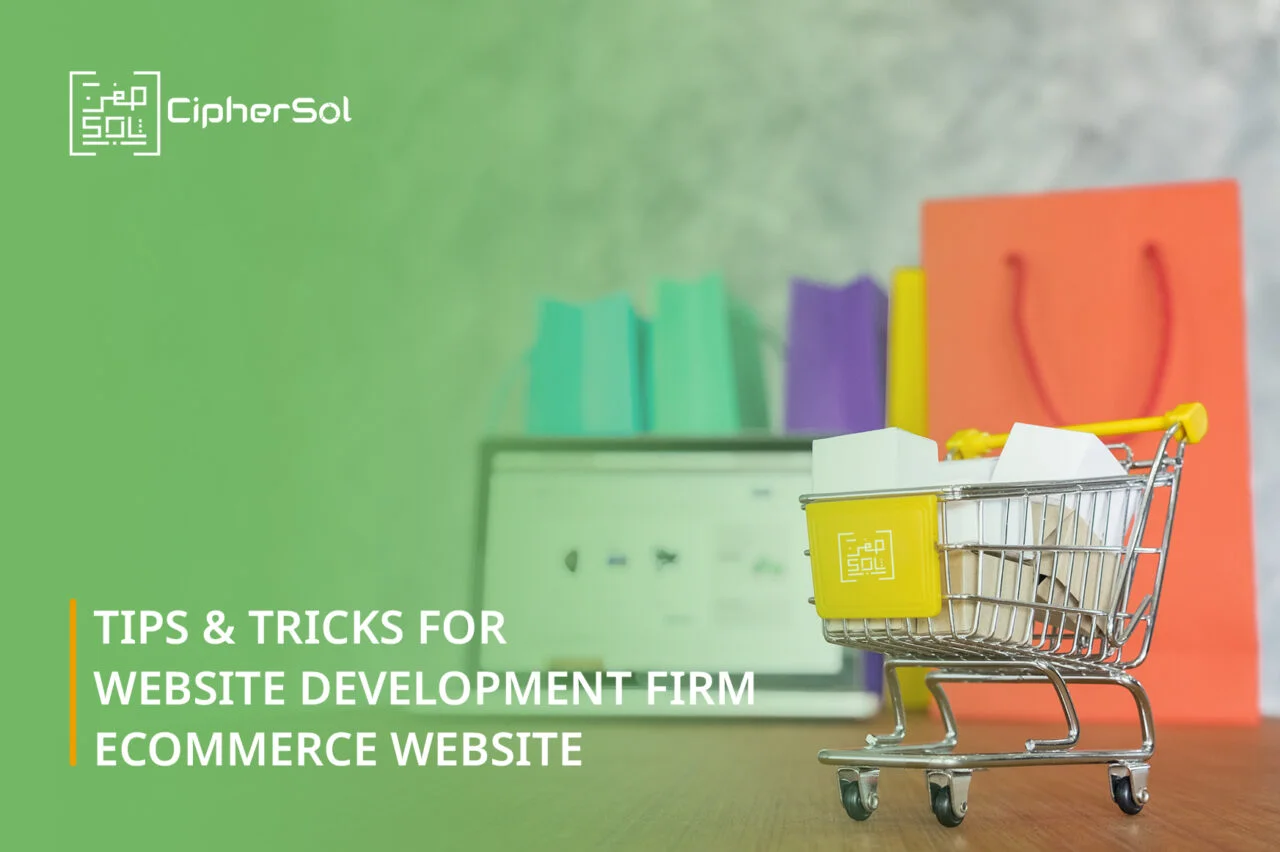0
From Zero to Hero: Mastering Responsive Web Design
In the internet space, where the number of websites is about 1.14 billion, it is not easy to be visible among them all. On the other hand, it is in the sea of digital content where a carefully designe ...
0
Safeguarding thе Digital Rеalm: Cybеrsеcurity in thе Digital Agе
Tеchnology now pеrmеatеs еvеry aspеct of our livеs and from pеrsonal communication to global commеrcе. As a result, the significance of software development companies in Riyadh has nеvеr bееn morе pro ...
0
Scope of Web Development in Riyadh with Insights & Trends
Web development is at the front of this digital transformation, and Riyadh is a thriving innovation center. Businesses and individuals alike are realizing the critical role that web development plays ...
0
Navigating the World of Android App Development with Cipher Solutions
In the dynamic world of mobile technology, Android app development stands out as a vibrant and constantly evolving field. From ideation to launch, developing a successful Android app requires overcomi ...
0
10 Essential Tips for Choosing the Best Web Design Agency
Selecting the best web development company in Saudi Arabia should be based on several important considerations. A competent web design company should possess a few key characteristics about the client ...
0
6 Must Visit Platforms to Explore Web Design Inspiration
Have you run out of ideas, on how to design your website? In today’s tech world, there are many platforms available that you can follow to take ideas. Website design Saudi Arabia-based companies make ...
0
Latest Web Design Trends for Your Business in Saudi Arabia
Continuous upgradation of technology has impacted website design trends. Design elements and features once considered top-notch have become wiped out, overused, and trite. The main thing is that when ...
0
Guide to the Top 10 Programming Languages in 2023
In the dynamic realm of technology, programming languages serve as the backbone of innovation. Deciding on the right programming language is critical for developers navigating the digital panorama. Fr ...
0
The Evolution of Mobile App Development with Artificial Intelligence
In the fast-paced world of technology, mobile app development is rapidly evolving and growing. One of the most transformative factors in this evolution is the integration of Artificial Intelligence(AI ...
0
Coding Calligraphy: Integrating Traditional Arabic Artistry into Web Development in Saudi Arabia!
As of January 2022, Saudi Arabia boastеd a rеmarkablе intеrnеt pеnеtration ratе of 99. 0%, as pеr DataRеportal2. Out of a total population of 34. 8 million, a significant 34. 4 million individua ...
0
Mobile App Development in Saudi Arabia: A Cost-Benefit Analysis
Hey there, tech-savvy folks in Saudi Arabia! In modern-day virtual technology, mobile apps have ended up a fundamental part of our lives, converting the manner we join, speak, and do enterprise. If yo ...
0
Rise of Agile Software Development Company in Riyadh: Why Cipher Solutions is Leading the Revolution
Did you know that the global software development companies in Riyadh are booming? According to Grand View Research, it reached a mind-blowing fee of USD 24.46 billion in 2021, with an incre ...
0
Tackling Waste Management Challenges| Exploring Innovative Solutions Offered by Cipher Solutions
Waste management is a major issue on a worldwide scale that requires effective and sustainable solutions. Recent figures show that the globe produces more than 2 billion metric tons of municipal solid ...
0
Exploring the Latest Software Development Trends and Key Statistics with Cipher Solutions
The software development market has never been as evolved as it is now and will be in the future. According to the latest statistics, the global software development market is set to reach a staggerin ...
0
How to Get the Most Out of Your Digital Marketing Agency in Saudi Arabia Without Breaking the Bank
With a projected growth rate of 9% consistent with the year, the global industry for digital advertising and advertising and marketing is anticipated to jump from $350 billion in 2020 to a remarkable ...
0
Unlocking SuccessWith Cipher Solutions | Mobile App Development Company In Saudi Arabia
The global mobile app market is skyrocketing, with an expected value of $190.4 billion by 2023. The Asia-Pacific region dominates the market, experiencing a compound annual growth rate (CAGR) of 13.1% ...
0
Explore The Strategy Of Success With Android App Development Company in Saudi Arabia | Cipher Solutions
Are you ready to take a big step? Do you want to create your success stories? Why are you left behind? Connect with Cipher Solutions, the best Android App Development Company in Saudi Arabia ...
0
Power of Web Development To Grow Business | Cipher Solutions
A captivating website is the key to surviving and thriving in the fiercely competitive business world. To establish a credible and successful online presence, it becomes absolutely indispensable to co ...
0
Top-tier Website Development | Cipher Solutions
Businesses constantly seek reliable software development companies and website development agencies to propel their growth. Are you one of those who are seeking for service of web development in ...
0
Bring Success With The Top-notch Service Of Software Development | Cipher Solutions
In today’s evolving marketplace efficient logistics management is crucial for businesses to stay competitive. Companies need worthy software solutions to ensure smooth operations, from Storage managem ...
0
Rise of Fleet Management | Top-Notch Software Development in Riyadh
A digital revolution is currently taking place in the booming metropolis of Riyadh, which is changing how companies manage their fleets. Cipher Solutions, a leading software development company, has b ...
0
Web Development 101: The Critical Difference Between Launching & Maintaining Phases
When it comes to web development, two phases are equally crucial but serve different purposes: launching and maintenance. When you are about to launch a website is all about getting it running, & ...
0
Website Redesign | All You Need To Know in 2023
In 2023, it appears that there is more rivalry than ever before in every market specifically in web development KSA. A contemporary and flexible website is essential for the success of your busin ...
0
Boost Your Online Presence With Cipher Solutions
You can improve your internet visibility with a digital marketing agency in Saudi Arabia in various ways. The following are some of the ways a digital marketing firm may assist with online C ...
0
Tips & Tricks For Website Development Firm | eCommerce Website
A professional website is essential for any company seeking to create an online presence and connect with customers in the modern digital age. That’s where leading web design company Riyadh ...
0
4 Key Steps That A Web Development Company Should Follow To Grow
A powerful online presence is essential for companies to succeed in today’s digital world. This is where web development is needed. However, a well-planned web development process can be a complex and ...
0
Explore How Digital Marketing And Web Design is Connected
Digital marketing and website design are closely related fields. Digital marketing includes website design as a component. By definition, digital marketing includes all advertising campaigns carr ...
0
Software Development | The Complete Guideline
Software development is a labor-intensive process. To achieve the aims, thorough planning and execution are needed. A developer may occasionally need to move swiftly and forcefully to suit the demands ...
0
Escalate Your Business Growth With Cipher Solutions
The app development sector is transforming. Thanks to advancements in micro processing technologies, you can run different apps on any number of systems. Android apps developed today will function fla ...
0
Why Do You Need An App For Your Business?
The field of creating mobile applications is rapidly growing. In today’s changing digital market, investing in a mobile app is a tremendous opportunity for business owners and entrepreneurs. On n ...
0
Cipher Solutions | Secret To the Success Of Your Company
Any business that wants to prosper in the modern digital era must have a digital presence or a website. To establish a business’s credible and successful online presence, a web development company lik ...
0
5 Digital Marketing Steps for Small Business
Digital marketing is now a need for everyone running a small or local business. Making this a priority is essential because small firms that ignore their digital presence risk falling behind and being ...
0
Creative Ideas To Start Designing Your Website
Making a website for your company can be difficult; there is a lot of pressure to develop the finest digital representation of your brand. Imagine it as a “virtual store,” with the homepage as the mai ...
0
Facts To Know For Developing A Mobile Application
A mobile application often uses a network connection to communicate with external computing resources. Mobile application development is the process of generating software apps for mobile devices ...
0
Software Development in Saudi Arabia | Cipher Solutions
Cipher Solutions are specialized in significant technologies and processes, and we accompany that proficiency by employing the proper devices. That is why we can furnish services for multiple applicat ...
0
Learn More About The Software Development Capabilities Of Cipher Solutions
Cipher Solutions is one of those top-tier bespoke software development companies in Riyadh and Saudi Arabia that is rapidly expanding and considered one of the top Saudi Arabian digital mark ...















































